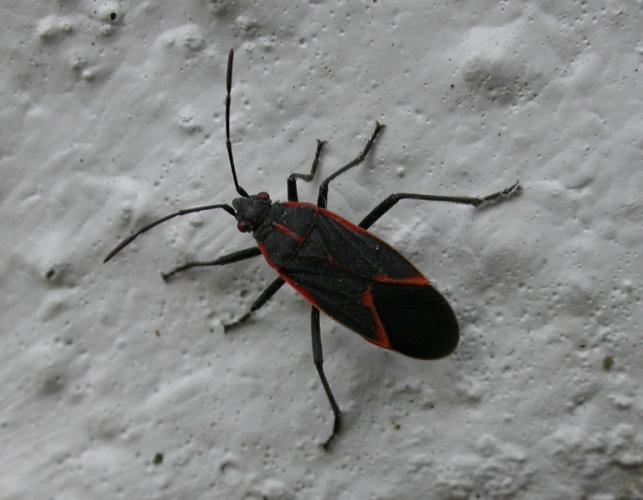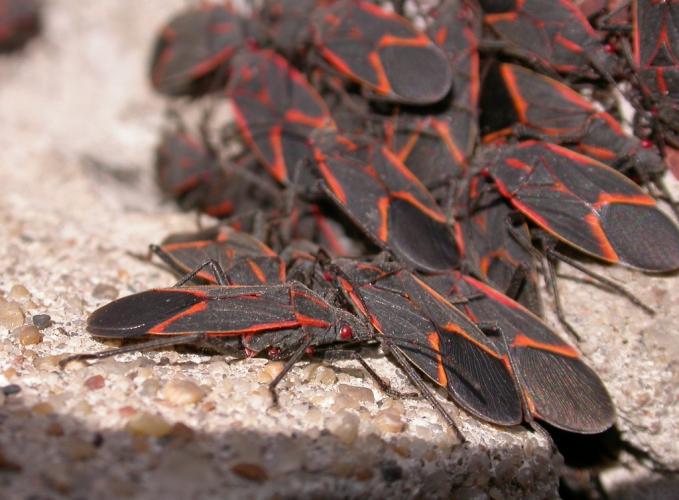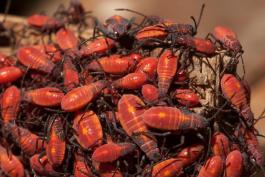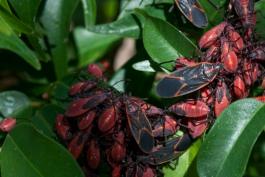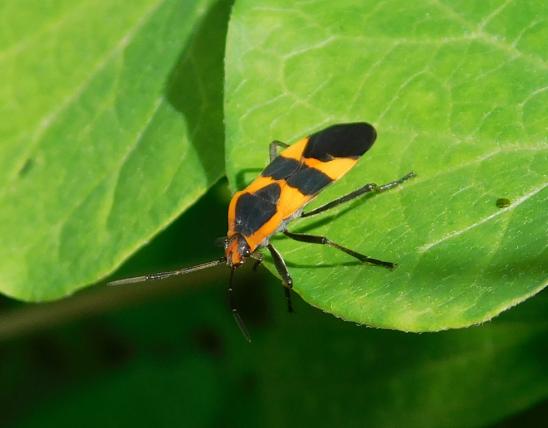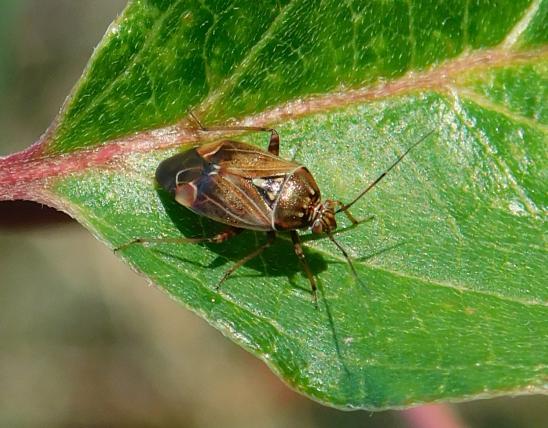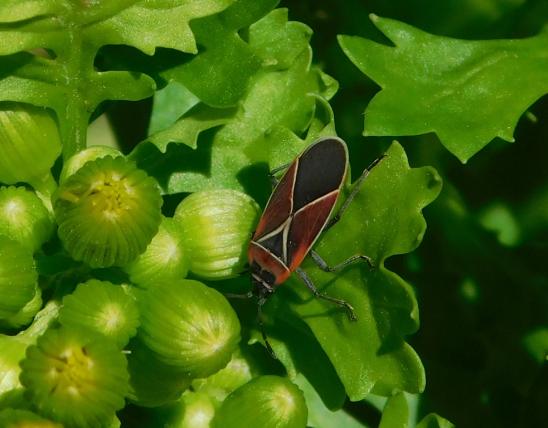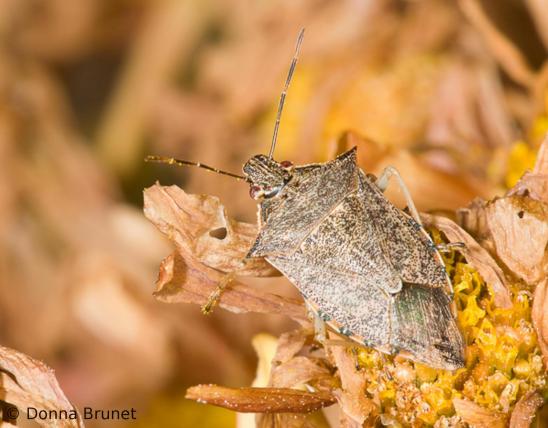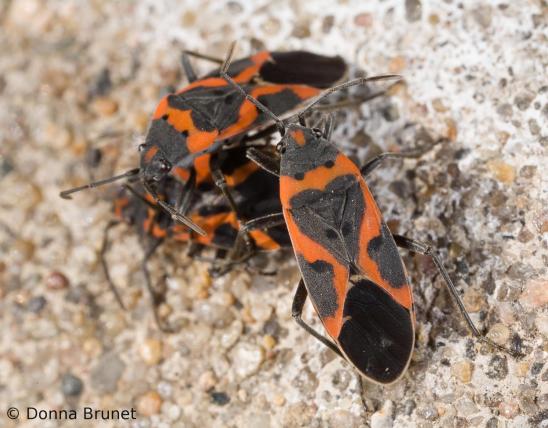
The eastern boxelder bug is a harmless blackish insect. The flattened back has red markings that sometimes form an X, and there is a red line along the outer edge of the closed wings. The membranous parts of the forewings have noticeable veins.
Immature stages are bright red with black legs. The wing buds (tiny, immature wings) are slate-gray or blackish.
Length: to ½ inch.

Statewide.
Habitat and Conservation
Boxelder bugs live on and near their food plant, the box elder tree, so they occur wherever those trees are found — forests, bottomlands, yards, parks, and more. In autumn you may see hundreds of these bugs crawling on the outside of your house, usually on the warm, south-facing side, as they seek winter shelter. They go dormant as the weather gets colder, but if they are warmed by your home’s heating, they may revive and enter your house, mistaking its warmth for springtime.
Food
Like many other true bugs (such as cicadas, aphids, stinkbugs, and leafhoppers), boxelder bugs have strawlike mouthparts for sucking plant juices. The preferred food plant is box elder (Acer negundo), though they are sometimes also found on other maples, especially silver maples, and ash trees. Generally, they feed on the soft, leafy parts of the trees. Oddly enough, boxelder bugs rarely hurt their host trees.
Status
Common. Their occurrence is linked to the availability of their food plants, so an area with many box elder trees will have more boxelder bugs than an area with none or very few.
Life Cycle
Like many other insects, boxelder bugs molt through a number of immature stages before their final molt, when they become winged, sexually mature adults. In autumn, large nymphs and adults congregate at protected overwintering sites: in the nooks of box elder bark, under the siding of a house, and so on. At the end of March they emerge from dormancy, and near the end of April they begin laying eggs, again in crevices of box elder tree bark.
Human Connections
If boxelder bugs “bug” you, consider removing nearby box elders and silver maples. Vacuuming, swatting, and using sticky traps can help. Insect-proof the house (put screens on vents, caulk cracks, etc.). If you use an insecticide, make sure it works on this species, and follow the directions carefully.
Ecosystem Connections
The red markings on boxelder bugs would seem to warn predators that they are distasteful, but many predators, such as praying mantises and some spiders, readily eat them anyway. With their bland diet of box elder sap, boxelder bugs are probably not toxic. But the similar-looking milkweed bugs, however, feed on toxic milkweed sap and are distasteful to predators. Boxelder bugs may be protected from predators by resembling a toxic species.
The multicolored Asian lady beetle is another species that swarms in late summer and enters cracks in homes. It emits foul odors to avoid predation and has a bright warning coloration.


